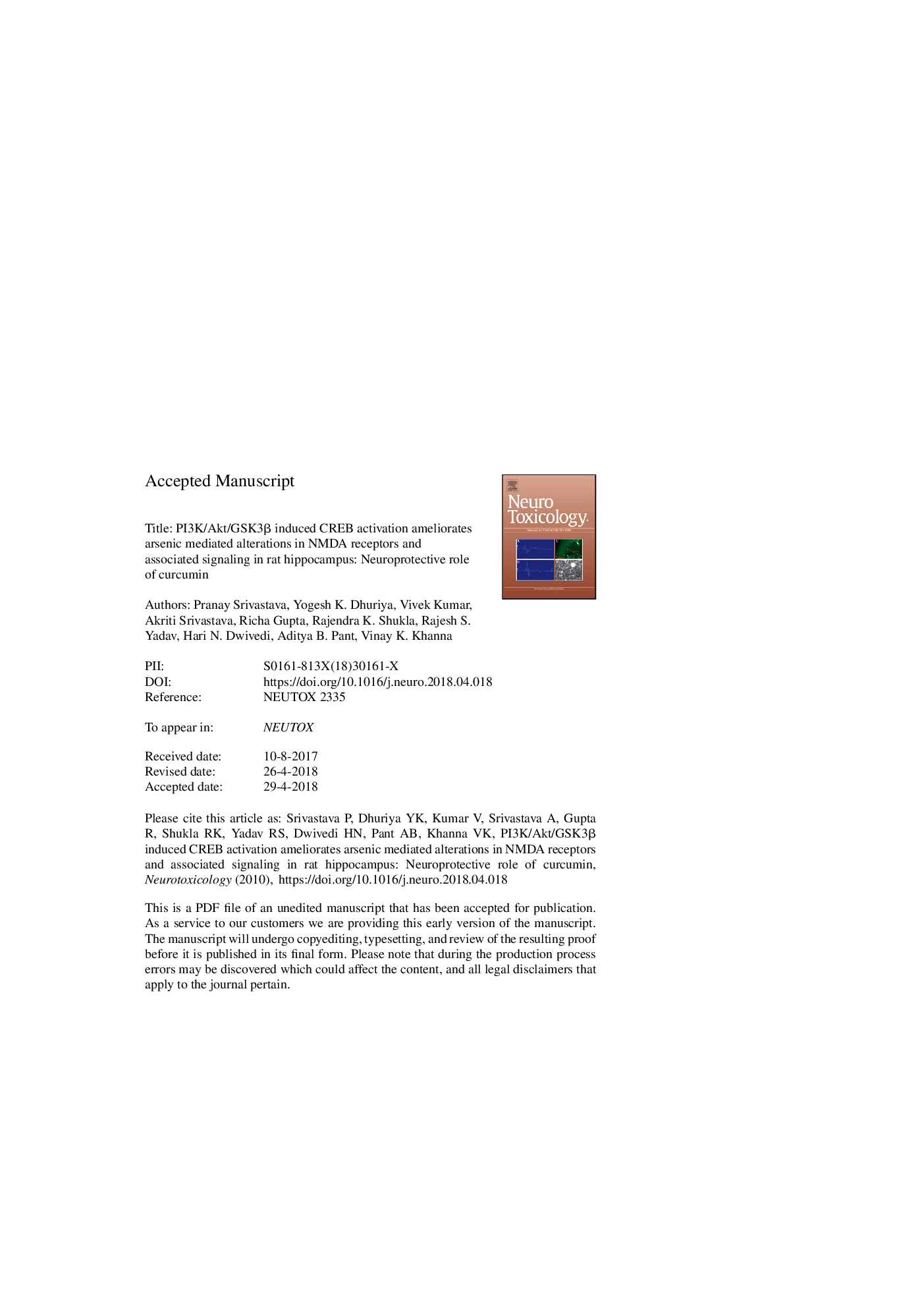| Article ID | Journal | Published Year | Pages | File Type |
|---|---|---|---|---|
| 8550122 | NeuroToxicology | 2018 | 46 Pages |
Abstract
Protective efficacy of curcumin in arsenic induced NMDA receptor dysfunctions and PI3K/Akt/ GSK3β signalling in hippocampus has been investigated in vivo and in vitro. Exposure to sodium arsenite (in vivo - 20â¯mg/kg, body weight p.o. for 28 days; in vitro - 10â¯Î¼M for 24â¯h) and curcumin (in vivo - 100â¯mg/kg body weight p.o. for 28 days; in vitro - 20â¯Î¼M for 24â¯h) was carried out alone or simultaneously. Treatment with curcumin ameliorated sodium arsenite induced alterations in the levels of NMDA receptors, its receptor subunits and synaptic proteins - pCaMKIIα, PSD-95 and SynGAP both in vivo and in vitro. Decreased levels of BDNF, pAkt, pERK1/2, pGSK3β and pCREB on sodium arsenite exposure were also protected by curcumin. Curcumin was found to decrease sodium arsenite induced changes in hippocampus by modulating PI3K/Akt/GSK3β neuronal survival pathway, known to regulate various cellular events. Treatment of hippocampal cultures with pharmacological inhibitors for ERK1/2, GSK3β and Akt individually inhibited levels of CREB and proteins associated with PI3K/Akt/GSK3β pathway. Simultaneous treatment with curcumin was found to improve sodium arsenite induced learning and memory deficits in rats assessed by water maze and Y-maze. The results provide evidence that curcumin exercises its neuroprotective effect involving PI3K/Akt pathway which may affect NMDA receptors and downstream signalling through TrKβ and BDNF in arsenic induced cognitive deficits in hippocampus.
Related Topics
Life Sciences
Environmental Science
Health, Toxicology and Mutagenesis
Authors
Pranay Srivastava, Yogesh K. Dhuriya, Vivek Kumar, Akriti Srivastava, Richa Gupta, Rajendra K. Shukla, Rajesh S. Yadav, Hari N. Dwivedi, Aditya B. Pant, Vinay K. Khanna,
